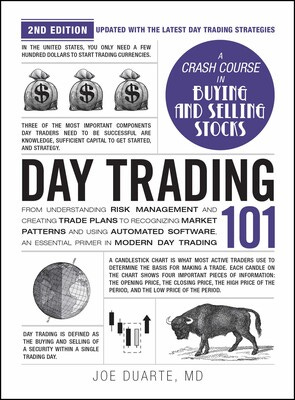Clobbered: Walmart’s Lackluster Guidance Busts Momentum – But are they Missing Something?
Bonds Rally as Stocks Falter – Betting on Recession, or Covid 2.0?
Image courtesy of Gobankingrates.com.
Walmart’s earnings guidance crushed Wall Street’s highflyers, while a midday Friday Daily Mail report during a huge options expiration, suggested that another Corona virus pandemic is possible and you’ve got some panic selling.
That was enough to send Wall Street into panic mode. Sure a new pandemic would be terrible. And a slowing in sales at Walmart would be of wide economic concern. Yet, instead of panicking, we focus on individual positions while building our shopping list for the next rally. Remember, getting stopped out, builds cash which can be deployed when conditions improve.
Bad Housing, Worried Consumers and Some Walmart Fine Print
Trading turned messy in stocks and perked up in Bond Land last week as worse than expected guidance from Walmart (WMT), a stock which we still hold – for now – and whose current guidance I discuss in the Weekender Portfolio shook things up. Ahead of the panic we did some house cleaning with excellent results. Our winners, AMZN (in the Weekender Portfolio) together with CFLT, and BBY in the Smart Money Passport Momentum Portfolio – counted for nearly $5400 in profits.
Along with Walmart’s guidance, existing home sales crashed and consumer expectations for inflation are rising. But as I discuss below, at least for now, Walmart is the least of the market’s worries.
Walmart has been the last refuge for consumers, even upscale consumers during the inflationary wave we’ve experienced since 2021. Quarter after quarter, Walmart has beaten estimates and given upbeat guidance. But in its most recent quarter, even after beating expectations, it guided analysts lower on sales for the upcoming quarter.
At first glance, flat sales guidance is bad news. Yet, deep within the earnings report, Walmart lists two items which will cost it 115 basis points (1.5%) in next quarter’s sales - the leap year effect (100 basis points) and its recent acquisition of home electronics retailer Vizio (15 basis points). Those two items account for most of the drop in the sales forecast. In other words, Walmart isn’t predicting a slowing in sales but a reduction in income due to expenses and a calendar twist. Thus, although things may slow, Walmart isn’t likely to crash and burn. Therefore, until proven otherwise, this dip (as long as it stays above our Sell stop) could be a buying opportunity.
I’ve recently become a Walmart customer through their Sam’s club. As I noted here, Costco had gotten too expensive. I’ve found Sam’s prices are slightly lower than Costco’s even as their product selection is not as broad. The latter is a positive because I don’t buy stuff I don’t need and my ticket is smaller.
What I’ve also noted during my three visits to Sam’s since I switched, is the traffic difference between stores. The Sam’s Club in the affluent Plano area is busier than the one in the more working class area (Lewisville). The shopping carts in Plano seem a bit fuller than Lewisville’s, suggesting less affluent Sam’s members are being squeezed harder by inflation. Yet, if affluent customers are buying more than less affluent customers, it all adds up for Walmart. Moreover, if squeezed consumers are flocking to Sam’s, as I did, the growth will continue.
The market seems to be overreacting. Recently shares of Amazon.com (AMZN), which we also held in our Weekender portfolio, and which delivered a $4800 gain when we were stopped out, have also lost their shine. Yet, both WMT and AMZN are on my shopping list. Full details in this week’s Weekender.
Bond Yields Sink. Betting on Recession?
The bond market perked up after the Walmart earnings and the consumer confidence and housing news, clearly betting on a possible slowing in the economy– maybe even a recession. Moreover, with the Fed likely to wait, as usual, too long before restarting their easing cycle, bond traders are betting on a slowing economy leading to a fall in inflation. We’ll see about that after the January PCE index is released on 2/28. A hotter than expected number will likely lead to a backup in bond yields and keep the Fed on hold.
The U.S. Ten Year Note yield (TNX) remained below 4.5% and its 50-day moving average last week. This is a bullish move, which could keep a floor under stocks, unless we are headed for a recession.
Momentum Crash Juices Fear
Here is the market’s current background:
• The CNN Greed/Fear Index (GF) closed the week in the Fear area at 36. This remains encouraging. Markets rarely descend into long term bear trends during periods of high fear.
• The Put/Call ratio has been rising lately, closing at 0.85 after falling to 0.7 earlier in the week. The recent high for CPC was just above 1.0 in early 2025. The prior meaningful market bottoms, which led to long term rallies followed P/C ratios of 1.25 (8/24) and 1.30 (11/24). A sudden peak in this indicator could again signal a market bottom.
• The New York Stock Exchange Advance Decline line (NYAD, recently delivered a new high and has remained above its 50-day moving average.
Bottom line: Volatility may continue. Yet, high levels of Fear are eventually bullish for stocks.
Money Flows to Less Volatile Sectors
Money continues to roll out of momentum stocks, such as WMT and AMZN and may be finding a home in more sedate sectors.
The SPDR S&P 500 Growth ETF (SPYG) reversed its recent bullish leanings and is testing its 50-day moving average.
The beneficiaries are utilities and select pharmaceutical stocks. The Utilities Select SPDR Fund (XLU) is holding its steady uptrend. For more on ETF trading and investing, check out the Sector Selector Portfolio.
The VanEck Vectors Pharmaceutical ETF (PPH) has just broken above its 200-day moving average.
Liquidity Eases Slightly
Liquidity, the ease with which money travels through the financial system is the key to bull and bear markets. When liquidity is ample, markets tend to rise. When liquidity is scarce markets don’t do well. The Federal Reserve’s National Financial Conditions Index (NFCI) is a readily available tool which indirectly shows us the state of liquidity in the markets.
A decline in the weekly NFCI number indicates that the ease with which money can be borrowed is rising. Last week, NFCI fell to -0.65 from last week’s -0.64). This remains positive for stocks.
Something Big is Still Brewing in Bitcoin
The big move I’ve been expecting in Bitcoin (BTCUSD) seems to be getting closer, as the Bollinger Bands (BB) are squeezing the 20-day moving average tightly. The direction is a tough call.
My latest Bitcoin trade in the ESP portfolio of the Smart Money Passport remains active. If you’re an ETF trader, consider, Joe Duarte’s Sector Selector. It’s FREE with your monthly membership to Buy Me a Coffee. Sign up here. If you’ve been thinking about starting a day trading career, my new book “Day Trading 101” will get you started on the right foot. For steady gainers, check out the Smart Money Weekender Portfolio. I’ve just added several new positions in this weekend’s edition. Trade better and longer with more energy and vigor. Visit my Health Page.
NYAD Reverses After Approaching New Highs
The New York Stock Exchange Advance Decline line (NYAD) continues to hover just below its recent highs. A new high on NYAD, with follow through is still required to signal a viable uptrend. The 50-day moving average remains a critical support level.
The Nasdaq 100 Index (NDX) reversed after its recent new high. A retest of 21,000 is not out of the question.
The S&P 500 (SPX) remains above 6000 level but sits on top of its 50-day moving average. We could see a move toward the 5800-5900 trading range in the short term.
VIX is Rising. Watch the 20 Level.
The CBOE Volatility Index (VIX) has bottomed. A move above 20 would be very bearish.
VIX rises when traders buy large volumes of put options. Rising put option volume leads market makers to sell stock index futures to hedge their risk and leads markets lower. A fall in VIX is bullish signaling lower put option volume, eventually leads to call buying which is bullish as it causes market makers to buy stock index futures raising the odds of higher stock prices.
To get the latest up to date information on options trading, check out “Options Trading for Dummies”, now in its 4th Edition – Available Now!
#1 Best Seller in Options Trading – Now in Audible Audiobook Format
Options Trading for Dummies (4th Edition) Audible Audiobook – Unabridged
Joe Duarte MD (Author), Terrence Kidd (Narrator), Tantor Audio (Publisher)
4.5 out of 5 stars














